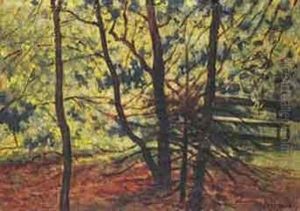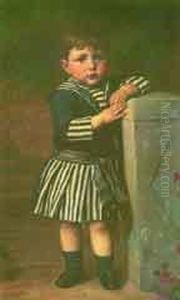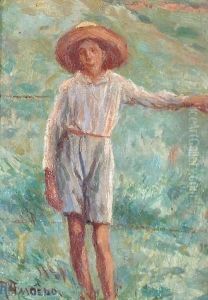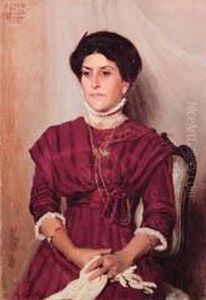Rodolpho Amoedo Paintings
Rodolfo Amoedo was a significant Brazilian painter, designer, and professor who played an important role in the development of Brazilian art in the late 19th and early 20th centuries. Born on December 11, 1857, in Salvador, Bahia, Brazil, he showed an early interest in art, which led him to pursue formal training.
Amoedo initially studied at the Liceu de Artes e Ofícios in Rio de Janeiro but soon moved to the Academia Imperial de Belas Artes (Imperial Academy of Fine Arts), where he learned under the guidance of notable artists such as Victor Meirelles and Zeferino da Costa. His talent and dedication earned him a travel award to Europe, a common practice at the time for promising artists from Brazil.
In 1878, he traveled to Paris, where he attended the École des Beaux-Arts and worked in the studios of academic painters like Alexandre Cabanel and Adolphe William Bouguereau. During his time in Europe, Amoedo absorbed the academic style prevalent at the time, which emphasized classical subjects, rigorous technique, and a polished finish. He became particularly interested in historical painting, a genre he would later explore in his own work.
After returning to Brazil in the early 1880s, Amoedo became a key figure in the Brazilian art scene. He participated in the Salon of the Imperial Academy and was awarded several prizes for his work. His paintings often depicted historical and mythological subjects, as well as scenes from Brazilian history, rendered with a sense of realism and attention to detail.
One of his most famous works is 'The Last Tamoio', completed in 1883, which depicts the death of a Native Brazilian from the Tamoio tribe, a poignant symbol of the struggle and ultimate demise of Brazil's indigenous peoples during colonization. This painting is considered one of his masterpieces and reflects his ability to combine academic techniques with powerful narrative content.
Amoedo was also deeply involved in art education. He taught at the Escola Nacional de Belas Artes (National School of Fine Arts), formerly the Imperial Academy, after the proclamation of the Republic in Brazil. He influenced a generation of Brazilian artists, instilling in them the academic principles he had learned in Europe. His role as an educator contributed to the continuation of the academic tradition in Brazilian art, even as Modernism began to take hold elsewhere.
Throughout his life, Amoedo received various honors and recognition for his contributions to the arts. He continued to paint, teach, and exhibit his work until his later years. Rodolfo Amoedo passed away on May 31, 1941, in Rio de Janeiro, leaving behind a legacy as one of Brazil's important artists of the academic period, whose works helped shape the country's cultural heritage.



